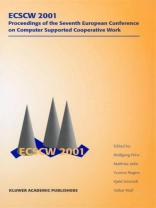Schmidt and Bannon (1992) introduced the concept of common information space by contrasting it with technical conceptions of shared information: Cooperative work is not facilitated simply by the provisioning of a shared database, but rather requires the active construction by the participants of a common information space where the meanings of the shared objects are debated and resolved, at least locally and temporarily. (Schmidt and Bannon, p. 22) A CIS, then, encompasses not only the information but also the practices by which actors establish its meaning for their collective work. These negotiated understandings of the information are as important as the availability of the information itself: The actors must attempt to jointly construct a common information space which goes beyond their individual personal information spaces. . . . The common information space is negotiated and established by the actors involved. (Schmidt and Bannon, p. 28) This is not to suggest that actors’ understandings of the information are identical; they are simply "common" enough to coordinate the work. People understand how the information is relevant for their own work. Therefore, individuals engaged in different activities will have different perspectives on the same information. The work of maintaining the common information space is the work that it takes to balance and accommodate these different perspectives. A "bug" report in software development is a simple example. Software developers and quality assurance personnel have access to the same bug report information. However, access to information is not sufficient to coordinate their work.
Matthias Jarke & Wolfgang Prinz
ECSCW 2001 [PDF ebook]
ECSCW 2001 [PDF ebook]
Buy this ebook and get 1 more FREE!
Language English ● Format PDF ● ISBN 9780306480195 ● Editor Matthias Jarke & Wolfgang Prinz ● Publisher Springer Netherlands ● Published 2007 ● Downloadable 3 times ● Currency EUR ● ID 4699737 ● Copy protection Adobe DRM
Requires a DRM capable ebook reader












